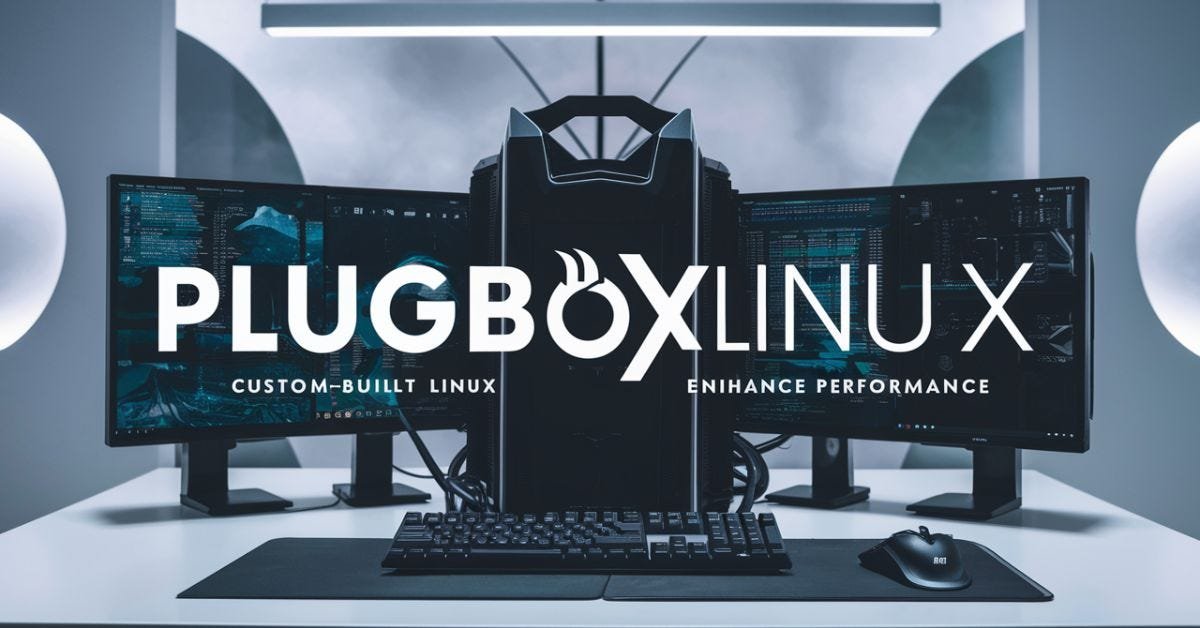Introduction to PlugboxLinux
Welcome to the world of PlugboxLinux! If you’re seeking a lightweight, flexible operating system that can adapt to your needs, you’ve come to the right place. PlugboxLinux is designed for optimal performance, making it an excellent choice for both seasoned developers and newcomers alike. Whether you’re using it on older hardware or looking to streamline your workflow on more powerful machines, optimizing its performance can make a significant difference.
With just a few simple tweaks and techniques, you can harness the full potential of this versatile platform. Let’s dive into some practical tips that will help elevate your experience with PlugboxLinux while ensuring everything runs smoothly!
Understanding Performance Optimization on PlugboxLinux
Performance optimization on PlugboxLinux is essential for maximizing its capabilities. This lightweight distribution is designed to be efficient, but there’s always more you can do.
Understanding how your applications interact with the system helps identify bottlenecks. Monitoring CPU usage and memory consumption gives insight into performance issues.
You should also consider varying workloads. Different tasks may require distinct settings and resources, so adapt accordingly.
Familiarizing yourself with configuration files can yield significant improvements. Tweaking parameters lets you fine-tune the environment based on specific needs.
Remember that optimizing isn’t a one-time task; it requires ongoing adjustments as usage patterns change over time. By staying proactive, you’ll ensure PlugboxLinux runs smoothly and efficiently.
Tips for Optimizing CPU Usage
To optimize CPU usage on PlugboxLinux, start by identifying resource-heavy processes. Use commands like `top` or `htop` to monitor real-time performance. They reveal which applications are consuming the most resources.
Consider adjusting the priority of processes with the `nice` command. Lowering a process’s priority frees up CPU time for more critical tasks.
Another effective strategy is to disable unnecessary startup applications. This reduces the load when your system boots up, allowing essential services to run smoothly.
You might also explore using lightweight alternatives for heavy applications. For instance, opting for simpler text editors instead of full-fledged IDEs can significantly lower CPU demand.
Regularly updating your software ensures that you benefit from optimizations and bug fixes that enhance overall efficiency in PlugboxLinux systems.
Memory Management Techniques for Better Performance
Efficient memory management is essential for enhancing the performance of PlugboxLinux. Start by monitoring your current memory usage with tools like `free` or `htop`. These provide a snapshot of how much RAM your applications consume.
Consider optimizing swap space as well. Properly configured swap can prevent system slowdowns when physical memory runs low. You might want to adjust swappiness, which controls how aggressively the kernel swaps data. A lower value prioritizes RAM usage, while a higher value favors swapping out inactive processes.
Another technique involves minimizing background services and processes that consume precious resources without providing significant benefits. Review startup applications too; disabling unnecessary ones will free up valuable RAM from the get-go.
Leverage caching mechanisms within PlugboxLinux to enhance application responsiveness and reduce read/write operations on disk storage, leading to smoother overall operation.
Utilizing PlugboxLinux’s Built-in Tools for Performance Monitoring
PlugboxLinux comes with an array of built-in tools that make performance monitoring straightforward and effective. These utilities help you stay informed about system health without needing third-party software.
One key tool is `top`, which provides a real-time view of processes consuming your CPU. You can easily identify resource hogs and take action accordingly.
Another valuable utility is `htop`. It offers a more user-friendly interface than its predecessor, allowing for easier navigation through running processes. You can sort by various metrics to optimize performance quickly.
For disk usage insights, consider using `iostat` or `vmstat`. They provide detailed statistics on I/O operations, helping pinpoint bottlenecks in data access.
Don’t overlook the power of logging with tools like `syslog`. Regularly reviewing logs helps catch potential issues before they escalate into significant problems.
Configuring I/O Scheduling for Improved Efficiency
Configuring I/O scheduling can significantly enhance the performance of PlugboxLinux. By selecting the right scheduling algorithm, you can better manage how your system handles input and output operations.
PlugboxLinux offers several algorithms like Completely Fair Queuing (CFQ) and Deadline. CFQ provides a balanced approach, ensuring that all processes get fair access to disk resources. If you’re running time-sensitive applications, consider using the Deadline scheduler. This option prioritizes tasks based on their urgency.
To change your I/O scheduler, use the command line interface. Execute `echo [scheduler_name] > /sys/block/[device]/queue/scheduler`. Replace `[scheduler_name]` with your chosen algorithm and `[device]` with your storage device identifier.
Regularly monitor how these changes affect overall system performance. Adjusting your I/O settings can lead to noticeable improvements in responsiveness for various applications running on PlugboxLinux.
Conclusion: Achieving Maximum Performance on PlugboxLinux
To achieve maximum performance on PlugboxLinux, it’s essential to implement a variety of strategies. Start by understanding how the system operates and where your resources are being utilized. Focus on optimizing CPU usage through efficient scheduling and process management. Memory plays a crucial role as well; effective memory management techniques will help ensure that your applications run smoothly without hogging resources.
Utilizing the built-in tools for performance monitoring allows you to keep an eye on system metrics in real-time, identifying bottlenecks quickly. Don’t overlook I/O scheduling either; configuring this aspect can lead to significant efficiency improvements in data handling.
Remember, tweaking settings might require some experimentation but can yield great rewards. With these approaches, you’ll be well-equipped to enhance the overall responsiveness and effectiveness of PlugboxLinux, ensuring it meets all your computing needs seamlessly.

